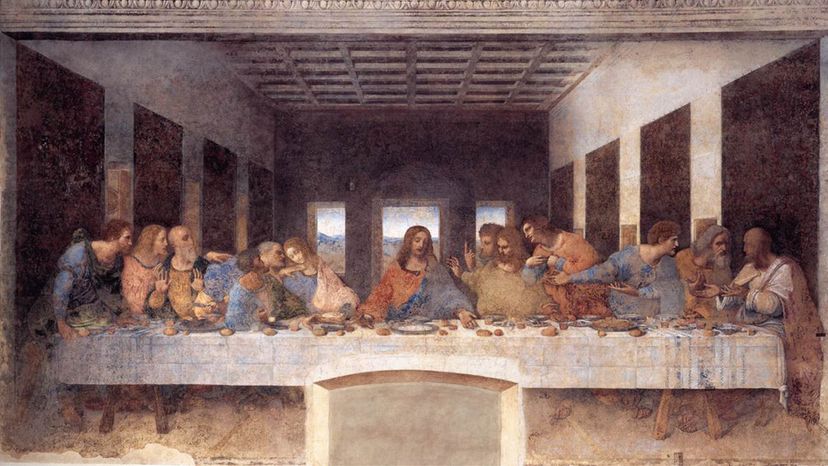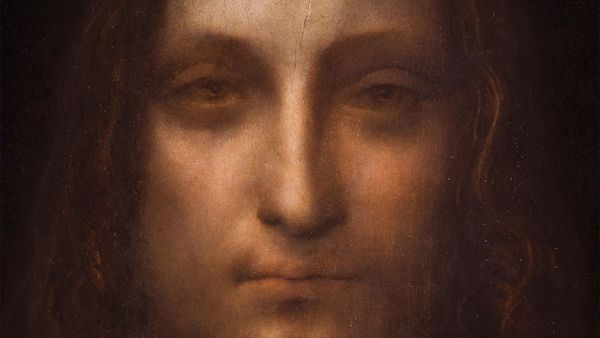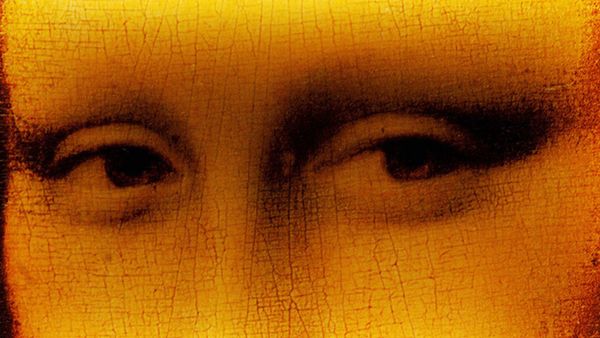
Located on the wall of Milan's Convent of Santa Maria delle Grazie is a work of art that's considered by many to be one of the greatest artistic masterpieces of all time. But its creator, Leonardo da Vinci, wasn't exactly stoked about it when the Duke of Milan, Ludovico Sforza, commissioned the piece in 1494.
"Leonardo did not want to paint 'The Last Supper,'" says Ross King, author of "Leonardo and The Last Supper." "Instead, he wanted to do a gigantic bronze equestrian moment — a monumental work that would certainly have made him famous. But the outbreak of war in 1494 meant he couldn't do his bronze horse, so as compensation he was given the task of painting a wall in a room where a band of friars ate their dinner every day. He had never painted on such a large scale. Having little experience in such a difficult task, it's not surprising that he complained bitterly about the commission, at which it was entirely possible that he would fail miserably. Happily, the story turned out otherwise."
Advertisement
What resulted from da Vinci's hesitant participation is a mural that famously depicts the last supper of Jesus Christ with his apostles, on the day before his crucifixion. The scene is based on the description in the Gospel of John 13:21, and da Vinci intended to convey the reactions of Jesus' disciples the moment they learned that one of them would betray him.
King, who has also written several other books on Italian, French and Canadian art and history, including "Brunelleschi's Dome" and "Michelangelo and the Pope's Ceiling," says da Vinci's "The Last Supper" is particularly important for a variety of reasons, perhaps most of all for its elevation of the artist to celebrity status. "Its completion marks the moment when Leonardo, then in his mid-40s, finally created what he called a 'work of fame,'" he says. "It's amazing to think that, before 'The Last Supper,' Leonardo had achieved very little. Had he died in, say, 1492, when he was 40, he would be little more than a footnote in art history, known as someone who showed enormous promise but never delivered the goods. But with 'The Last Supper,' he delivered spectacularly. Without having created 'The Last Supper,' he probably would never have received his later commissions, including the 'Mona Lisa.' So, the work was absolutely crucial not only to the history of art but also to his own career."
One special feature of "The Last Supper" is its sheer size. "No one else in history had ever created such a large painting with such a great level of realistic detail, as well as with such believable emotions and dramatic expressions," King says of the piece, which measures approximately 15 feet by 29 feet (4.5 meters by 8.8 meters). "No one who painted a Last Supper in the centuries afterward could do so without an eye on Leonardo's masterpiece."
Da Vinci opted to portray one pivotal moment in his scene: the instant just before the birth of the Eucharist, when Jesus reaches for the bread (meant to symbolize his crucified body) and wine (a representation of his blood). According to Corinthians 11:23-26, the event went like this:
Advertisement


